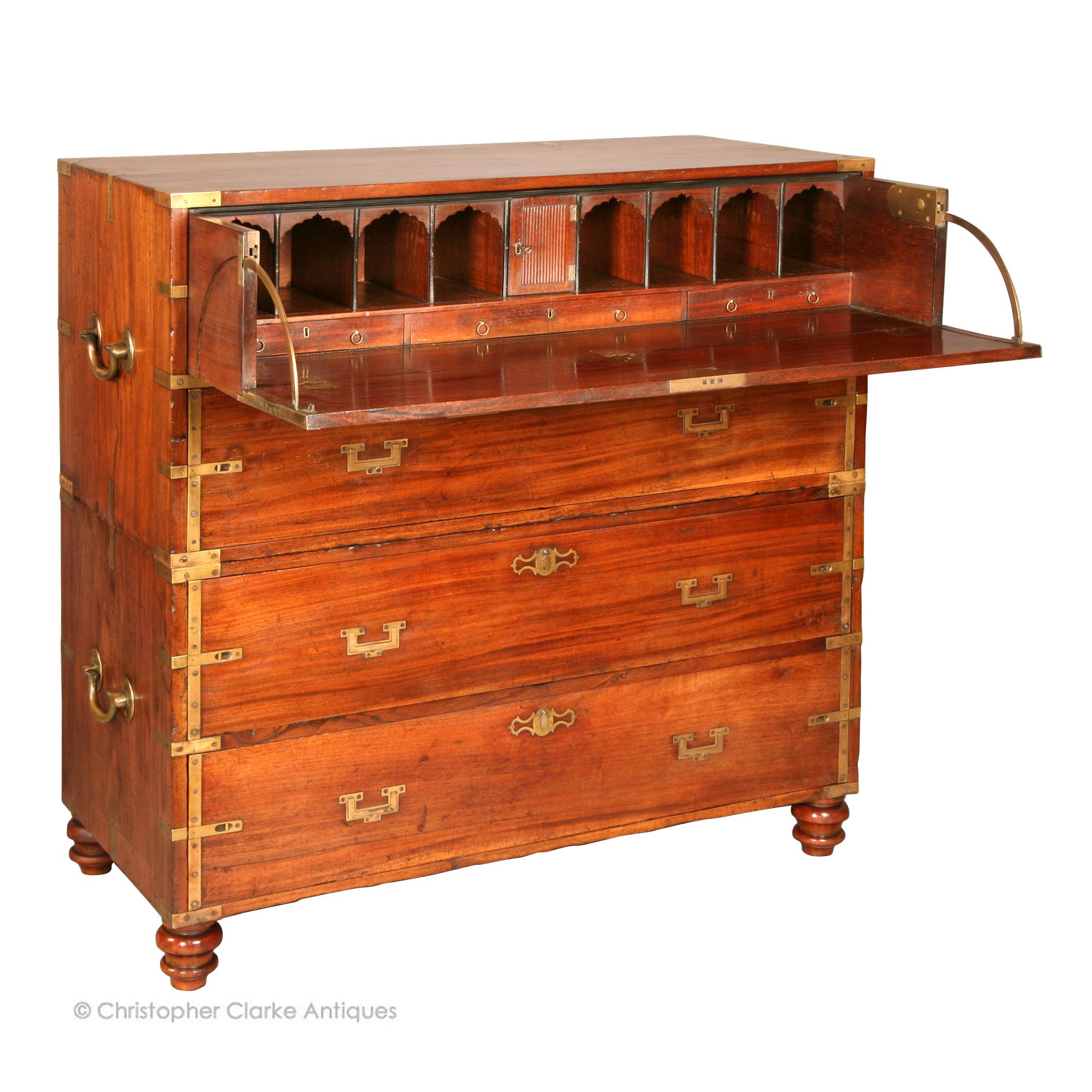Col. Squire's Antique Military Chest
Col. Squire's Antique Military Chest
8094
The timber used to make this chest and the nationality of the cabinet maker are both difficult to fully determine. The timber is an Asian hardwood; it's not mahogany or teak but shares some of their qualities.
The chest is Anglo-Indian and the pigeon holes clearly point to an Indian influence. However, the skill of the cabinet making, the side handles and brass escutcheons have a Chinese feel to them. It is known that Calcutta had a large community of Chinese with cabinet maker's undoubtedly amongst them. Squire is also known to have been in Calcutta on several occasions so this would tie in. Aside from the all round high quality of the chest, it also stands out for its locking mechanism to the drawers. The carrying handles to the sides indicate that it never had a packing case and it is suspected that such cases would be wrapped in oilcloth or their drawers simply locked. This chest would be far more secure during travel as all the drawers have a sliding bolt to each side. With the central 3 lever lock these would give 3 fixing points to each drawer. This is a system we have not seen on any other chest. The extra brass to the edges of the drawers also make it far more visually appealing. The secretaire is fitted with 3 internal drawers which do not have keys but lock by lifting the key hole pin to slide a catch. The central drawer has dividers to take 1 inkwell and pens. All the brass furniture is of good quality and fitted by steel screws. The side handles are particularly nice.
The chest is painted to the back Col. Squire, 13th and 7 to one half with the name and regiment and 8 to the other. Each separately carried trunk or half of chest would be given an individual number for transport. Tristram Charnley Squire was born in 1781 and enlisted as an Ensign in 1809. He moved up through the ranks and in 1842 became a 2nd Lieut. Colonel and took command of the 13th Regiment. 4 years later he sold his commission and retired. He saw action with the 7th Fusiliers in the Peninsular War and sailed to India as an officer of the 13th Somerset Light Infantry in 1822. Squire's later career was a mixture of service in Asia and convalescence in South Africa. He fought in the Burma Campaign of 1824, mentioned in dispatches and the 1st Afghan War seeing action at Kandahar, Ghuznee, Khoord, Kabul Pass. He was also besieged at Jellalabad by Akhbar Khan in 1842 when the British famously sallied out and routed the enemy. On their march home every garrison they passed saluted them for this action. He first sailed to Cape Town with his family in 1825 due to ill health, returning to Calcutta 2 years later. By 1831 he once again took his family to the Cape to recover his health and stayed a year before returning to India. It is entirely possible that Squire bought this chest before he made the rank of Colonel but if we go by the rank that is on the back it can be dated to between 1842 and 1846, when he retired.
Dimensions:
Circa 1845
Col. Squire 13th
RELATED ITEMS























